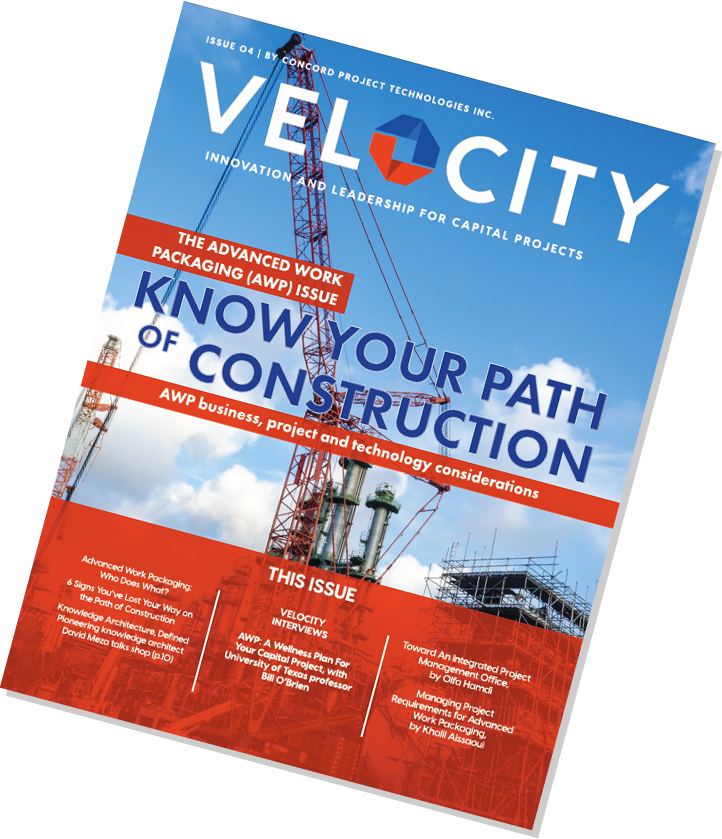The best way to find out is to undertake a comprehensive maturity assessment. Here’s how to do it right.
The foundation for a successful transition to Advanced Work Packaging (AWP) is laid long before the creation of a single work package, before the org chart is redrawn and new software is installed, even before the introductory training session. The first stake is driven into the ground when a forward-thinking executive asks this critical question: “Are we ready for Advanced Work Packaging?”
Contrary to popular belief, the answer is not obvious: Merely wanting or deciding to adopt AWP is not enough. Attempting to implement AWP when your organization is not ready is like embarking on an ultramarathon without any training: You are setting yourself up for failure. This is why the first question leaders must seek to answer is whether their organizations are ready to adopt Advanced Work Packaging. How solid are your project delivery systems? How effective are your teams? Do you have a fully articulated project delivery architecture? Is your leadership solid enough to move to predictable project delivery?
These are just a few of the questions that will dictate if, how and when you integrate AWP into your organization; there are many more. Fundamentally, the question is: Are you ready for advanced work packaging?
An ideal maturity assessment should look at all areas of organizational and project delivery capacity, beginning well before AWP is adopted.
The benefits of a formal maturity assessment
A formal maturity assessment is best undertaken before you take any concrete steps toward adopting Advanced Work Packaging in your organization. The goal here is to develop a comprehensive understanding of your organization’s existing project delivery systems, as well as leadership, culture and other key elements that will directly impact the success — or failure — of your AWP integration.
Stay true to your capital strategy. To do this, focus on linking resource requests to the goals in your capital strategy. Ultimately, a project is a resource request. Does this one fit with your capital strategy?
An AWP transformation can be complex; don’t wing it. Consider that when you implement a new protocol like Advanced Work Packaging, you’re introducing a host of new elements to your teams, including new language, new deliverables and new ways of working together. You need to know where you stand so that you can approach your unique transformation in a way that will really work for your organization.
The reality is that not every company is ready to adopt AWP in its entirety, and even among those who are ready for AWP, the path to integration can look very different. As a leader, you must ensure that your AWP adoption plan will be effective in bringing your people and systems along with you, and to do that you need to understand your strengths and weaknesses, and catalogue the risks and roadblocks you’ll face along the way.
The best way to gain this understanding is through a maturity assessment, but very little has been written about AWP readiness, organizational maturity and comprehensive assessments. CII’s IR-272, co-authored by Concord® CEO Olfa Hamdi, identified three levels of AWP maturity:
Early – The organization is piloting AWP strategies
Level 2 – The organization is using multiple, integrated AWP elements
Level 3 – All areas of the company have adopted AWP principles
The best way to gain this understanding is through a maturity assessment, but very little has been written about AWP readiness, organizational maturity and comprehensive assessments.
Who can benefit from a maturity assessment?
Both Owners and EPC companies need an AWP maturity assessment, particularly those with a portfolio of capital projects and an internal project management structure. Why? Because companies with comprehensive project protocols have both formal and informal mechanisms that directly impact project delivery and predictability. Leaders who want to maintain and improve existing performance should be reluctant to tinker with these systems unless they have a clear view of the immediate and long-term consequences. The only organization that can get away without a maturity system is a company executing a one-off capital project.
An inside look at Concord®‘s four pillars of maturity
Our comprehensive maturity assessment evaluates more than 120 distinct elements and provides leaders and executives with all of the information required to make smart decisions about how best to implement AWP in their organizations.
We review multiple data sets across several business areas including but not exclusive to staffing, construction management and project strategy, management, and delivery. Our focus on a handful of key pillars makes the analysis easy to apply to the unique circumstances of each organization we work with:
The Planning Pillar
Take a detailed look at your planning approach and practices to see if they’re compatible with the principles of Advanced Work Packaging.
The Engineering Pillar
Assess the degree to which your company is construction-driven, and examine whether you teams are capable of aligning your engineering with a Path of Construction.
The Construction Pillar
Examine all construction execution-related practices that correlate with project outcomes like safety and labor productivity.
The Collaboration Pillar
Assess the leadership, culture, contracting strategy, and a host of other factors that impact the ability of your team and stakeholders to function in a disciplined manner.
Are you ready for Advanced Work Packaging? If you’re a forward-looking leader who is interested in adopting AWP the right way, we would be happy to help with your maturity assessment. Contact us today.





